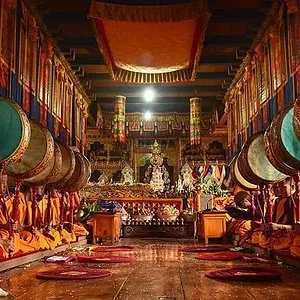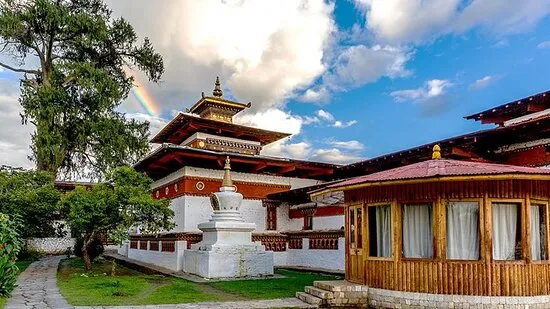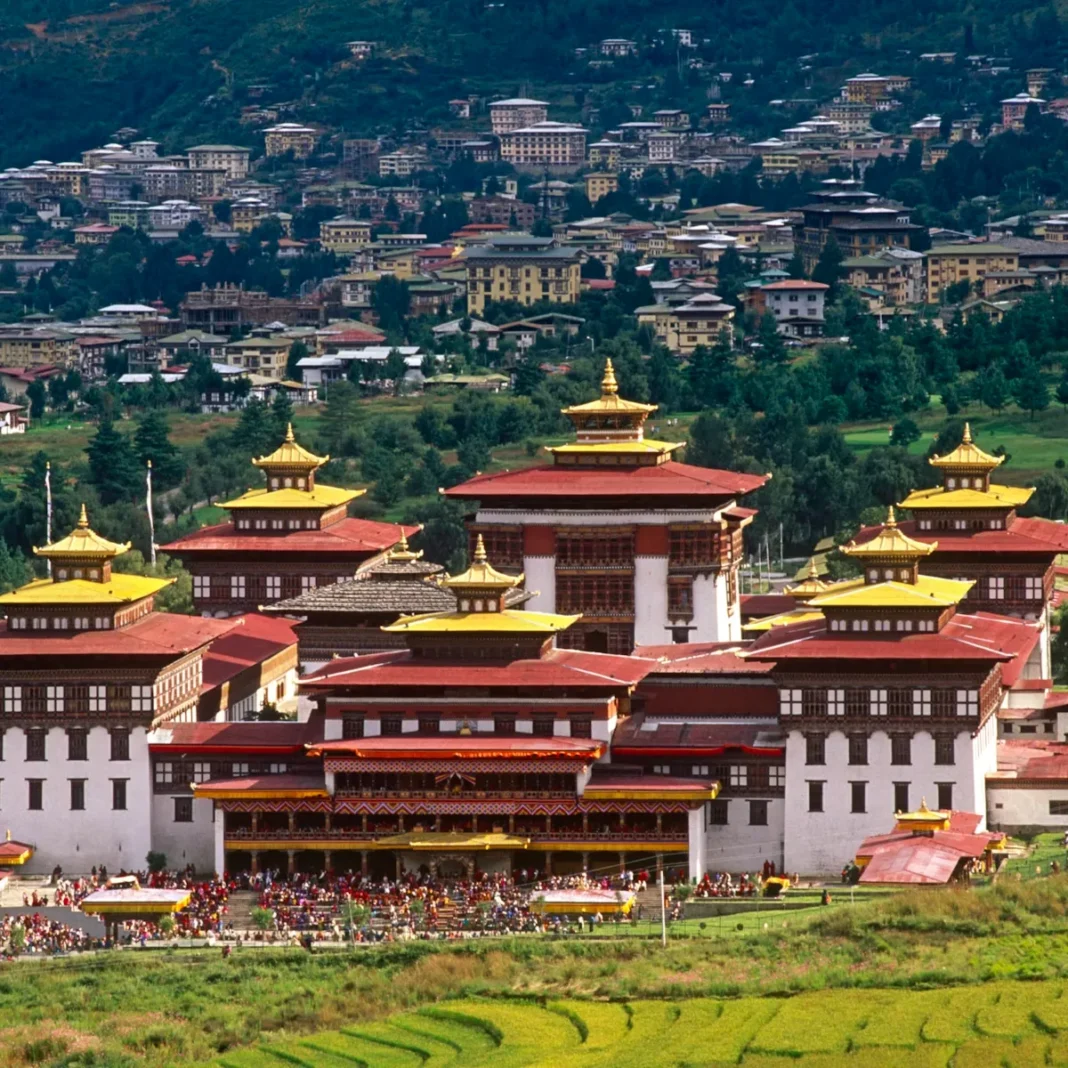In the heart of Bhutan’s picturesque Paro Valley lies a hidden gem, a temple that whispers tales of ancient legends and spiritual devotion – the Kyichu Lhakhang. This 7th-century Buddhist sanctuary, one of Bhutan’s oldest and most revered temples, beckons travelers with its timeless beauty, vibrant artistry, and serene ambiance.
Legends of Kyichu Lhakhang: Bhutan Temple Mythology and Spiritual Origins
Legend has it that Kyichu Lhakhang was one of 108 temples that the Tibetan King Songtsän Gampo constructed in a single day. His goal? To subdue a demoness who lay across the Himalayas, obstructing the spread of Buddhism. Pinned down at this very spot by a temple, her malevolent influence was neutralized, and as a result, Buddhism flourished.
Architectural Splendor of Kyichu Lhakhang: A Glimpse into Bhutan’s Rich Heritage
Furthermore, the temple complex showcases traditional Bhutanese architecture, a harmonious blend of wood, stone, and vibrant colors. Intricate carvings grace the windows and doors, while the interiors are adorned with murals depicting Buddhist deities, scenes from the life of the Buddha, and intricate mandalas.
Kyichu Lhakhang’s Cultural Heartbeat: Festivals, Rituals, and Bhutanese Traditions in Action
Moreover, Kyichu Lhakhang remains a vibrant hub of cultural activity. Throughout the year, it hosts colorful festivals, religious ceremonies, and prayers, attracting devotees from across Bhutan and beyond. Witnessing these celebrations offers a unique insight into the Bhutanese way of life and their deep-rooted spiritual beliefs.
Treasures of Time at Kyichu Lhakhang: Discovering Ancient Murals, Thangkas, and Sacred Relics
In addition to its cultural significance, inside the temple’s hallowed halls, you’ll discover a treasure trove of ancient art and artifacts. The walls showcase exquisite murals, some dating back centuries, while precious thangkas (religious scrolls) depict intricate scenes from Buddhist mythology. The temple also houses sacred relics, including a statue of Rinpoche, the revered founder of Tibetan Buddhism.
The Sacred Orange Tree: A Symbol of Fertility and Prosperity
Within the temple complex, a sacred orange tree stands as a symbol of fertility and prosperity. Legend has it that this tree, believed to be an offshoot of a tree in Tibet, bears fruit throughout the year, a testament to the temple’s spiritual power.
Visiting Kyichu Lhakhang: A Spiritual Sojourn
Consequently, a visit to Kyichu Lhakhang is more than just a sightseeing excursion; it’s a spiritual journey. As you stroll through the serene gardens, spin the prayer wheels, and offer your prayers, you’ll feel a sense of peace and tranquility wash over you.
Practical Information and Tips
- Location: Paro Valley, Bhutan
- Best Time to Visit: Spring (March-May) and autumn (September-November)
- Dress Code: Respectful attire is required (cover shoulders and knees)
- Photography: Photography is usually allowed outside the temple, but it’s best to ask permission before taking photos inside.
Conclusion:
In conclusion, Kyichu Lhakhang stands as a testament to Bhutan’s rich cultural and spiritual heritage. A visit to this ancient temple promises an unforgettable journey into a world of timeless beauty, where history, art, and spirituality converge in perfect harmony.












